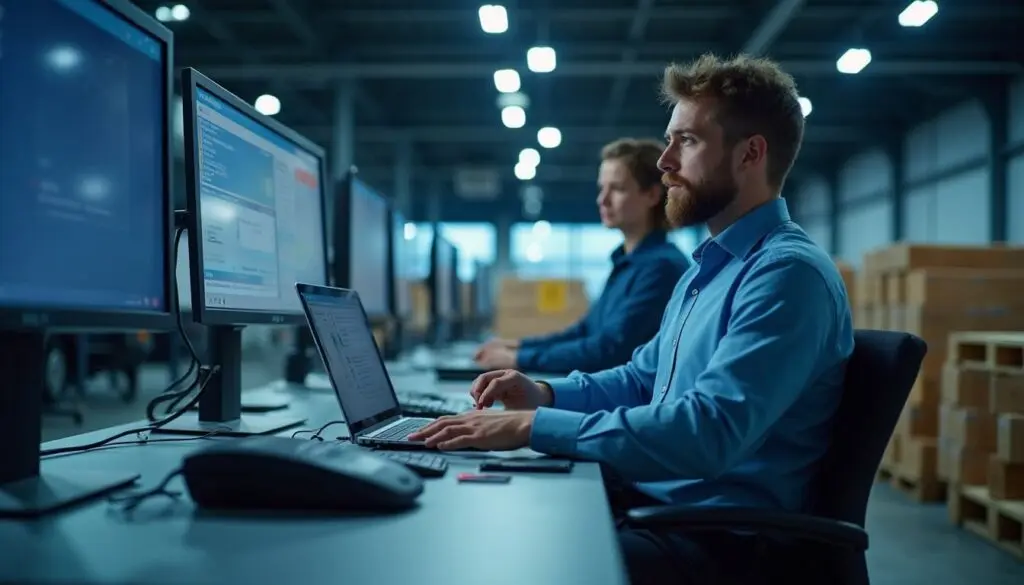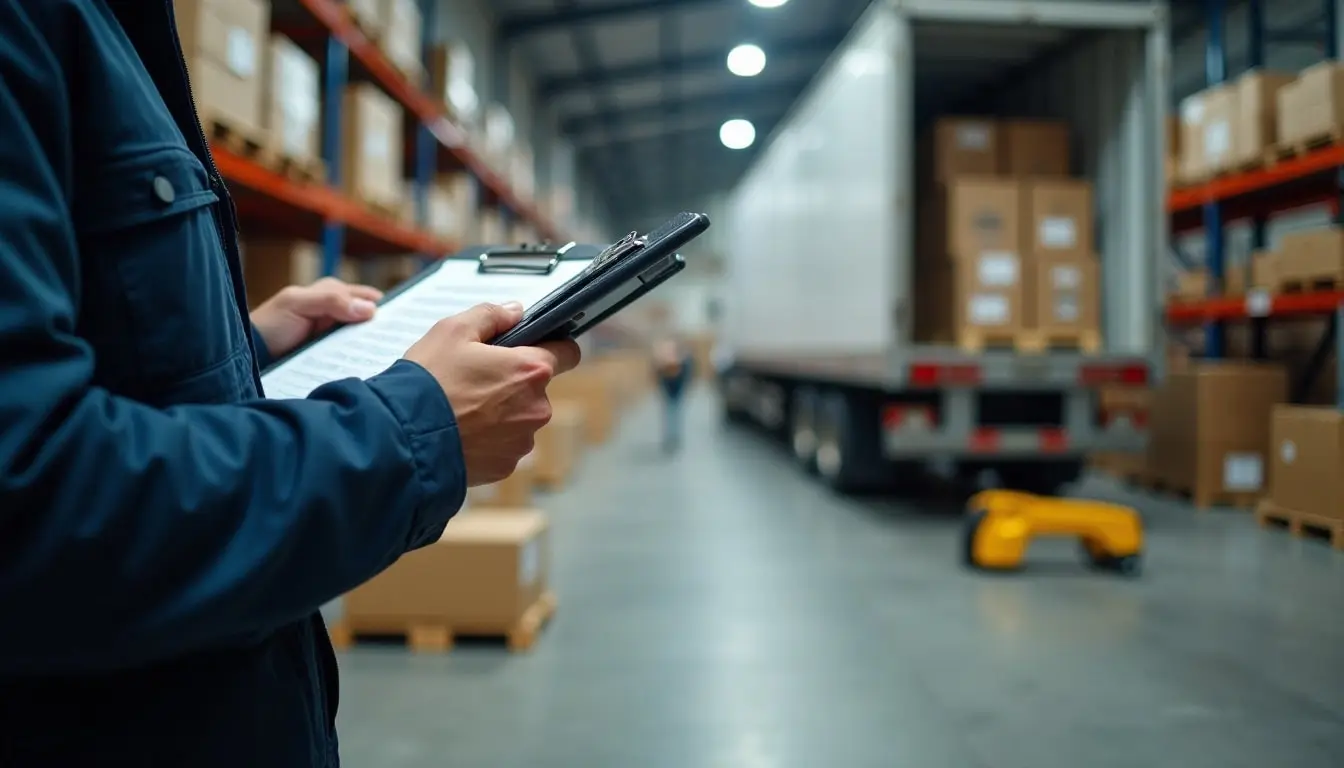
How Technology Is Changing LTL Freight
As markets demand faster deliveries and complex shipping arrangements, Less Than Truckload (LTL) carriers and shippers have increasingly turned to technology to remain competitive. From real-time tracking tools to AI-driven route optimizations, the tech revolution is touching every facet of LTL logistics—shaping how businesses quote, schedule, and move partial loads across multiple regions.
This article explores the key technological trends upending LTL freight and the practical benefits they bring, from reduced costs to improved customer satisfaction. If you’re seeking a glimpse into how digital innovations can overhaul your shipping operations—whether you’re a small business sending a few pallets or a large enterprise managing multiple lanes—read on for insights into the future of LTL.
Introduction
The Rise of Digitalization in Logistics
In the past decade, logistics as a whole has undergone a digital transformation, fueled by e-commerce growth and the universal expectation of rapid deliveries. Shippers no longer rely on guesswork or phone calls to gauge shipment progress. Instead, software solutions, data analytics, and IoT devices coordinate every link in the supply chain, providing real-time intelligence for timely decisions.
Why LTL Freight Demands Tech Integration
For partial loads, the complexity only grows: each LTL shipment often transfers between multiple trucks or terminals. Historically, this meant higher risk of routing errors or lost cargo. Technology addresses those challenges, making it easier for carriers to track, quote, and consolidate loads, and for shippers to see exactly where their freight stands at any given moment.
Core Technology Trends in LTL
TMS and Real-Time Tracking
Transportation Management Systems (TMS) centralize the daily chaos of LTL operations—streamlining quoting, dispatching, tracking, and billing. With integrated GPS or cellular tracking in trucks, managers can monitor location updates in near real-time. They also gain predictive ETAs, letting them alert customers of potential delays or early arrivals.
Automated Quoting and Booking Portals
Gone are the days of calling multiple carriers for a rate quote. Today’s digital platforms let shippers input weight, dimensions, and addresses to generate instant quotes from partnered carriers. Many also store user preferences for quicker booking, and maintain dynamic rate structures that reflect fuel price fluctuations or seasonal capacity constraints.
Enhancing Visibility and Efficiency
GPS Tracking, APIs, and EDI Connections
Real-time location data offers an unprecedented level of shipment transparency—particularly crucial if you have time-sensitive or fragile freight. Application Programming Interfaces (APIs) or Electronic Data Interchange (EDI) frameworks allow carriers and shippers to exchange data seamlessly. For instance, the carrier’s system can automatically push route updates to the shipper’s TMS, keeping everyone on the same page.
Carrier and 3PL Collaboration for Data Sharing
A robust 3PL or broker can unify data from multiple carriers, delivering a single dashboard for all shipments. This removes confusion inherent in juggling multiple websites or phone lines. By collecting aggregated freight data, businesses can also spot patterns—like the best time of day to dispatch certain loads or which routes frequently experience bottlenecks.

Route Optimization and Load Planning
AI-Driven Hub-and-Spoke Enhancements
Through algorithms analyzing traffic, fuel consumption, and shipments, advanced AI route planning can reduce miles traveled, slash fuel usage, and keep freight moving swiftly. LTL carriers can experiment with fewer cross-docks for certain lanes or combine partial loads headed to similar destinations, all guided by live analytics instead of manual guesswork.
Reducing Empty Miles and Cutting Emissions
Moreover, route optimization leads to fewer “empty mile” segments when a trailer runs only partially full or returns empty. This yields environmental gains—less wasted fuel, reduced carbon footprint— while also lowering operating costs. In an era of green shipping priorities, adopting tech-driven route solutions is often a market differentiator.
Digital Documentation and eBOL
The Shift Away from Paper in LTL
Electronic Bills of Lading (eBOL) let shippers complete forms digitally, capturing signatures on tablets or smartphones at pickup. This modernizes an archaic, paper-heavy process, eliminating lost documents and ensuring BOL data is consistent across systems. eBOLs also expedite claims handling if damage arises, since carriers and shippers share the same digital records.
Faster Processing and Reduced Errors
Paper BOLs risk typos or incomplete fields that can lead to reclassification or inaccurate billing. With eBOL, relevant details auto-populate from the TMS, guaranteeing uniform names, addresses, and freight classes. Not only does this precision streamline invoicing, it also helps carriers allocate truck space properly and avoid on-the-fly adjustments mid-transit.
Warehouse Automation and LTL Handling
Robotics, Automated Guided Vehicles (AGVs)
LTL shipments typically go through cross-dock facilities, where automation increasingly appears. Robotic arms and AGVs manage pallet movement efficiently, scanning barcodes and routing items to the correct outbound trailer. By mitigating human error and accelerating load/unload, carriers and distribution centers reduce overall transit times and claims.
Streamlining Cross-Docking Operations
A fully modernized cross-dock facility may deploy scanning gates, overhead cameras, or weigh-in-motion sensors. These gather real-time data about inbound freight, assigning each pallet to the next scheduled truck. Minimizing manual scanning or forklift labor shortens dwell time and fosters more consistent on-time performance—a major boon for time-critical LTL.
Blockchain and Security
Verifiable Contracts and Shipment Milestones
In an industry plagued by disputes—like claims about missing items—blockchain technology can log every handoff, from the origin terminal to final delivery. Each “block” records freight status, signatures, and location data in a tamper-proof ledger. This enhanced transparency reassures shippers that no unauthorized re-routing or tampering occurred.
Preventing Fraud Through Decentralized Ledgers
Paper forging or manipulated electronic logs hamper trust. With blockchain-based BOL and tracking records, any attempt to alter a record (like faking a damage note) is detected across the decentralized network. While still emerging in mainstream LTL applications, blockchain’s potential for secure, integrated data is promising.

Customer-Centric Technology
Real-Time Shipment Alerts and ETA Updates
Whether shipping B2B or to end consumers, advanced LTL carriers feed live notifications—like text or email updates—on a shipment’s progress. Real-time ETAs help recipients plan for labor or forklift availability. If unforeseen traffic or weather delays crop up, quick alerts help manage expectations and reduce frustration.
Online Portals for Transparent Pricing
Quote-to-ship functionality used to require phone calls, faxes, or repetitive forms. Now, carriers and 3PLs provide online portals where you can instantly compare lane rates, confirm special services (like liftgate or residential delivery), and see consolidated billing. This digital approach fosters trust: you see precisely how each cost—fuel surcharge, line-haul, or accessory fee—contributes to the final invoice.
Challenges to Tech Adoption
System Incompatibility and Legacy Infrastructure
Not all carriers have fully modernized. Some rely on outdated systems that can’t integrate easily with TMS or advanced apps, limiting real-time data exchange. Shippers must weigh each carrier’s digital capabilities if they want seamless tracking or eBOL integration. Large 3PLs may bridge these gaps but at an added margin.
Training Staff and Shifting Mindsets
Technological leaps require upskilling. Freight coordinators, warehouse workers, and even drivers need to understand new processes—like scanning eBOLs or inputting data into tablets. Resistance to change, especially among seasoned logistics pros, can slow adoption. Clear training programs and management buy-in are essential to harness the full benefits.
Future Outlook: Emerging Tech and Trends
AI Predictions for Freight Forecasting
AI predictive models that consider macroeconomics, e-commerce trends, and historical shipping patterns will likely refine LTL capacity planning even further. By anticipating surges or slack seasons, carriers can offer dynamic pricing that benefits both them and shippers, leading to less idle capacity and better route synergy.
Sustainability Tools and Carbon Tracking
Climate concerns push the industry to monitor and minimize emissions. Tech solutions enabling per-shipment CO2 calculations are on the rise, allowing shippers to offset or reduce carbon footprints. Going green might add complexities, but it resonates with consumers and corporate ESG objectives, shaping LTL’s direction.
Conclusion
Technology’s impact on LTL freight is profound—transforming how partial loads are planned, documented, and tracked. By leveraging TMS integrations, real-time route optimization, and digital documentation, shippers see fewer delays, reduced claims, and transparent pricing structures. Meanwhile, advanced hardware like robotics in cross-docks or blockchain-based security helps refine a historically complex segment.
As these tools mature, LTL shipping becomes ever more aligned with full-truckload in terms of reliability and speed, while still offering its hallmark cost efficiency for smaller loads. Shippers who embrace these tech advancements—cultivating synergy across carriers, 3PLs, and customers—will stand out in a market continually demanding faster and more accurate deliveries.
How useful was this post?
Click on a star to rate it!
Average rating 0 / 5. Vote count: 0
No votes so far! Be the first to rate this post.



